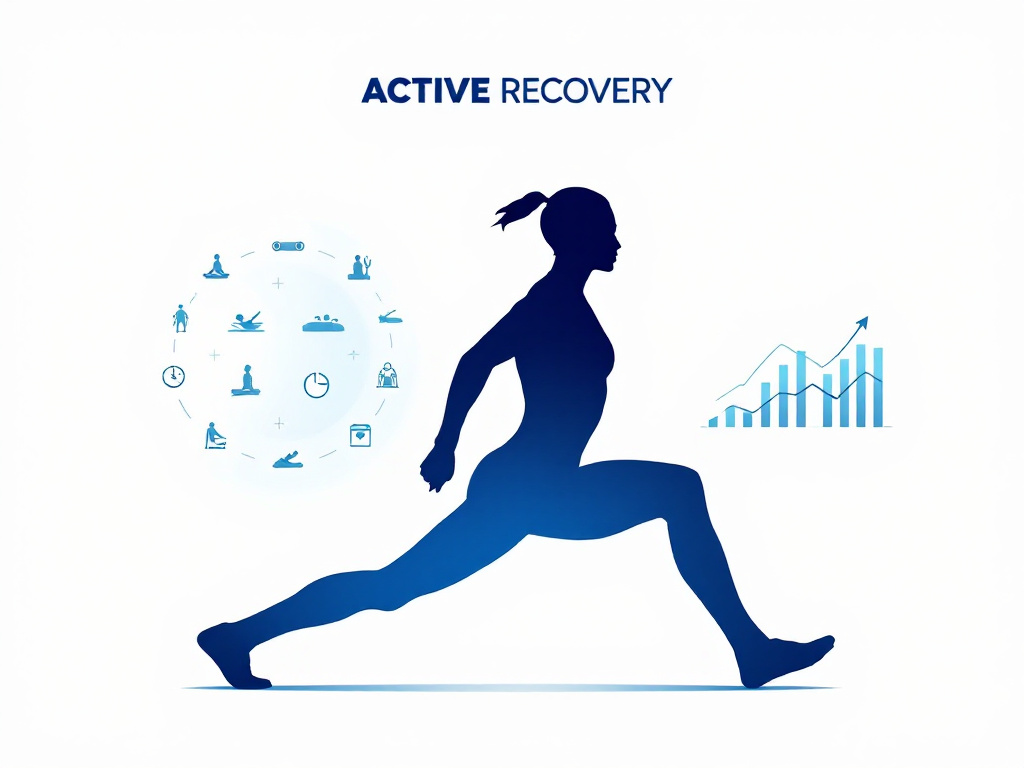Table of contents
- The Paradox of Professional Clutter
- Mindful Career Choices: The Foundation of Professional Minimalism
- Skill Essentials: Mastering the Art of Professional Prioritization
- Lean Workflow Strategies: Optimizing Your Daily Grind
- Purposeful Networking: Quality Over Quantity in Professional Relationships
- The Streamlined Career Path: Navigating Professional Growth with Intention
Amid the relentless demands of our modern work culture, where 76% of employees report feeling burned out at least sometimes[^1], the pursuit of professional success has become a double-edged sword. We’re constantly told to do more, be more, and achieve more. But what if the secret to career success isn’t about adding more to our plates, but strategically taking things off? Welcome to the world of career streamlining – where less truly can lead to more.
The Paradox of Professional Clutter
Identifying Career Chaos: Signs You’re Overcomplicating Your Work Life
Think about your typical workday. Are you constantly juggling multiple projects, drowning in emails, and feeling like you’re always busy but never productive? These are telltale signs of professional clutter. It’s not just about a messy desk (though that can be a symptom); it’s about the mental and emotional overhead that comes with an overcomplicated work life.
The Hidden Costs of Professional Excess
The costs of this professional excess go far beyond stress and burnout. A study by the American Psychological Association found that workplace stress costs U.S. companies up to $300 billion annually in lost productivity[^2]. But the real tragedy is the opportunity cost – the innovative ideas never pursued, the meaningful work left undone, and the work-life balance sacrificed on the altar of “busy-ness.
Case Study: From Burnout to Breakthrough – A Tech Executive’s Streamlining Journey
Take Jake, a senior executive at a fast-growing tech startup. He was working 70-hour weeks, constantly in meetings, and feeling like he was barely keeping his head above water. “I was doing everything,” he recalls, “but I wasn’t doing anything well.”Jakes’ turning point came when he realized that his overcomplicated work life was actually holding him back. He embarked on a journey of professional minimalism, ruthlessly prioritizing his tasks, streamlining his team’s processes, and learning to say no to projects that didn’t align with core objectives.The result? Within six months, Jakes’ team was more productive than ever, and he had cut his work week down to 50 hours. More importantly, he felt back in control of his career. I’m not just working,” he says, “I’m making an impact.
Mindful Career Choices: The Foundation of Professional Minimalism
Value-Aligned Work: Redefining Success Beyond the Paycheck
At the heart of career streamlining is the concept of value-aligned work. It’s not about chasing the biggest paycheck or the most prestigious title; it’s about identifying what truly matters to you professionally and aligning your career choices accordingly. Start by asking yourself some tough questions: What kind of work makes you lose track of time? What professional accomplishments are you most proud of? What impact do you want to have in your field or the world at large? Your answers will help you create a personal definition of success that goes beyond traditional metrics.
The Power of Saying No: Strategic Career Decisions
One of the most powerful tools in the minimalist professional’s arsenal is the ability to say no. This doesn’t mean becoming a naysayer; it means being strategic about your commitments. Warren Buffett famously said, “The difference between successful people and really successful people is that really successful people say no to almost everything.[^3] Every time you say yes to a project or opportunity, you’re implicitly saying no to something else. Make those choices count.
Crafting a Lean Career Narrative: Your Professional Story, Distilled
In the age of personal branding, it’s tempting to try to be everything to everyone. But a cluttered professional identity is as problematic as a cluttered desk. The minimalist approach involves crafting a lean career narrative – a clear, concise story of who you are professionally and what unique value you bring.This isn’t about limiting yourself; it’s about focusing your professional identity. When you can articulate your core strengths and passions in a compelling way, you become memorable. And in a crowded job market, being memorable is invaluable.
Skill Essentials: Mastering the Art of Professional Prioritization
The 80/20 Rule in Skill Development: Identifying Your Career Cornerstones
The Pareto Principle, or the 80/20 rule, suggests that 80% of effects come from 20% of causes. Apply this to your professional skill set: Which 20% of your skills contribute to 80% of your success?These are your career cornerstones – the skills that truly set you apart. Instead of trying to be a jack-of-all-trades, focus on becoming a master of these key skills. This doesn’t mean ignoring other areas, but it does mean being strategic about where you invest your time and energy.
Deliberate Practice: Maximizing Impact in Minimal Time
Once you’ve identified your career cornerstones, it’s time to apply the principle of deliberate practice. Coined by psychologist K. Anders Ericsson, deliberate practice involves focused, purposeful repetition with the specific goal of improving performance[^4]. This isn’t about putting in more hours; it’s about making the hours you put in count. Set specific goals for improvement, seek immediate feedback, and consistently push yourself out of your comfort zone. It’s challenging, but it’s the fastest route to mastery.
Cross-Pollination: How Diverse Skills Create Unique Professional Value
While focusing on your core skills is crucial, don’t underestimate the power of cross-pollination. Sometimes, it’s the unexpected combination of skills that creates unique professional value.For instance, a software engineer with strong writing skills might excel at technical documentation. A marketer with a background in psychology could bring unique insights to consumer behavior analysis. Look for ways to combine your diverse interests and experiences – this intersection is often where innovation happens.
Lean Workflow Strategies: Optimizing Your Daily Grind
The Minimalist To-Do List: Focusing on High-Impact Tasks
The traditional to-do list can be a source of stress rather than productivity. The minimalist approach involves ruthless prioritization. Each day, identify the one or two tasks that will move the needle most significantly on your key projects. These are your “must-dos.”Everything else goes on a separate list of “could-dos.” If you finish your must-dos and have time and energy left, great – tackle some could-dos. If not, you can end your day knowing you’ve accomplished what’s truly important.
Time Blocking 2.0: Innovative Approaches to Efficient Time Management
Time blocking isn’t a new concept, but the minimalist professional takes it to the next level. Instead of scheduling every minute of your day, try this approach:
1. Block out large chunks of time (2-3 hours) for deep, focused work on your most important projects.
2. Schedule shorter blocks for administrative tasks, emails, and meetings.
3. Leave some time unscheduled for flexibility and unexpected tasks.
This approach ensures you have the uninterrupted time needed for meaningful work while still accommodating the realities of a dynamic work environment.
Digital Decluttering: Streamlining Your Virtual Workspace
In our digital age, a cluttered virtual workspace can be just as detrimental as a messy physical one. Start by unsubscribing from unnecessary emails and newsletters. Use tools like Unroll.me to consolidate subscription emails into a single daily digest.Organize your digital files with a clear, intuitive system. The goal is to be able to find any document you need in under a minute. Finally, consider using a tool like Freedom to block distracting websites during your focused work time.
Purposeful Networking: Quality Over Quantity in Professional Relationships
The Minimalist’s Guide to Meaningful Connections
Networking is often seen as a numbers game, but the minimalist approach focuses on quality over quantity. Instead of trying to collect as many business cards as possible at events, aim to have a few meaningful conversations. Follow up with these contacts in a personalized way, referencing specific points from your conversation. It’s better to have a small network of strong, mutually beneficial relationships than a large network of superficial connections.
Virtual Networking in the Digital Age: Maximizing Impact, Minimizing Noise
In the era of social media and virtual events, it’s easy to fall into the trap of constant, low-value networking. The minimalist approach involves being strategic about your online presence. Choose one or two platforms that are most relevant to your field and focus your efforts there. Share thoughtful, valuable content rather than constant updates. Engage in meaningful discussions rather than surface-level interactions.
Cultivating a Lean, High-Value Professional Circle
Your professional circle should be a carefully curated group of individuals who inspire, challenge, and support you. Regularly assess your professional relationships. Are they adding value to your career and life? If not, it might be time to let some connections go to make room for more meaningful ones. Consider creating a personal board of advisors – a small group of mentors and peers who can offer guidance and perspective on your career decisions. This focused approach to networking can yield far more value than a scattershot attempt to connect with everyone in your industry.
The Streamlined Career Path: Navigating Professional Growth with Intention
Focused Goal-Setting: The Power of Fewer, Better Objectives
When it comes to career goals, less is often more. Instead of a laundry list of objectives, focus on setting a few key goals that align with your core values and long-term vision. Make these goals specific, measurable, and tied to clear deadlines. Regularly review and adjust these goals. As you progress in your career, your priorities may shift. The minimalist approach allows for this flexibility while keeping you focused on what truly matters.
Minimalist Professional Development: Curating Learning for Maximum ROI
These days we have endless webinars, online courses, and professional development opportunities, it’s easy to fall into the trap of constant learning without real growth. The minimalist approach involves being highly selective about your learning activities. Before committing to any professional development opportunity, ask yourself:
1. How does this align with my core career goals?
2. What specific skills or knowledge will I gain?
3. How will I apply this learning in my current or desired role?
By curating your learning experiences, you ensure that your professional development efforts yield tangible results.
The Art of Career Pivoting: Streamlining Your Professional Evolution
Career changes are increasingly common, but they don’t have to be chaotic. The minimalist approach to career pivoting involves leveraging your existing skills and experiences in new ways.Start by identifying the transferable skills from your current role that could apply to your desired field. Look for opportunities to gain relevant experience in your current job or through side projects. When you’re ready to make the move, craft a narrative that shows a clear, logical progression rather than a drastic shift.
Wrapping Up: Embracing the Power of Less in Your Professional Life
We often equates success with excess, the idea of professional minimalism might seem counterintuitive. But as we’ve explored, streamlining your career isn’t about doing less – it’s about doing more of what matters.
By focusing on value-aligned work, honing your essential skills, optimizing your workflows, nurturing meaningful professional relationships, and approaching your career path with intention, you can achieve not just success, but satisfaction and impact. As you move forward, challenge yourself to identify one area of your professional life that could benefit from simplification.
It might be decluttering your to-do list, reassessing your career goals, or streamlining your networking approach. Take action on this one area and observe the ripple effects. Remember, the goal of career streamlining isn’t to create limitations, but to open up possibilities. By clearing away the clutter – both literal and figurative – you create space for creativity, growth, and meaningful achievement. In your professional life, as in so many areas, less truly can be more.
References
[^1]: Gallup. (2020). Employee Burnout: Causes and Cures.
[^2]: American Psychological Association. (2010). Psychologically Healthy Workplace Program.
[^4]: Ericsson, K. A., Krampe, R. T., & Tesch-Römer, C. (1993). The role of deliberate practice in the acquisition of expert performance. Psychological Review, 100(3), 363–406.











La weekly I like the efforts you have put in this, regards for all the great content.
Ny weekly Very well presented. Every quote was awesome and thanks for sharing the content. Keep sharing and keep motivating others.
Your blog is a true gem in the world of online content. I’m continually impressed by the depth of your research and the clarity of your writing. Thank you for sharing your wisdom with us.
You have been working hard, and you’ve created beautiful things. The visual presentation is elegant, and the written content is top-notch. Despite the fact that you appear concerned about the possibility of delivering something that may be considered questionable, I believe that you will be able to resolve this problem quickly.